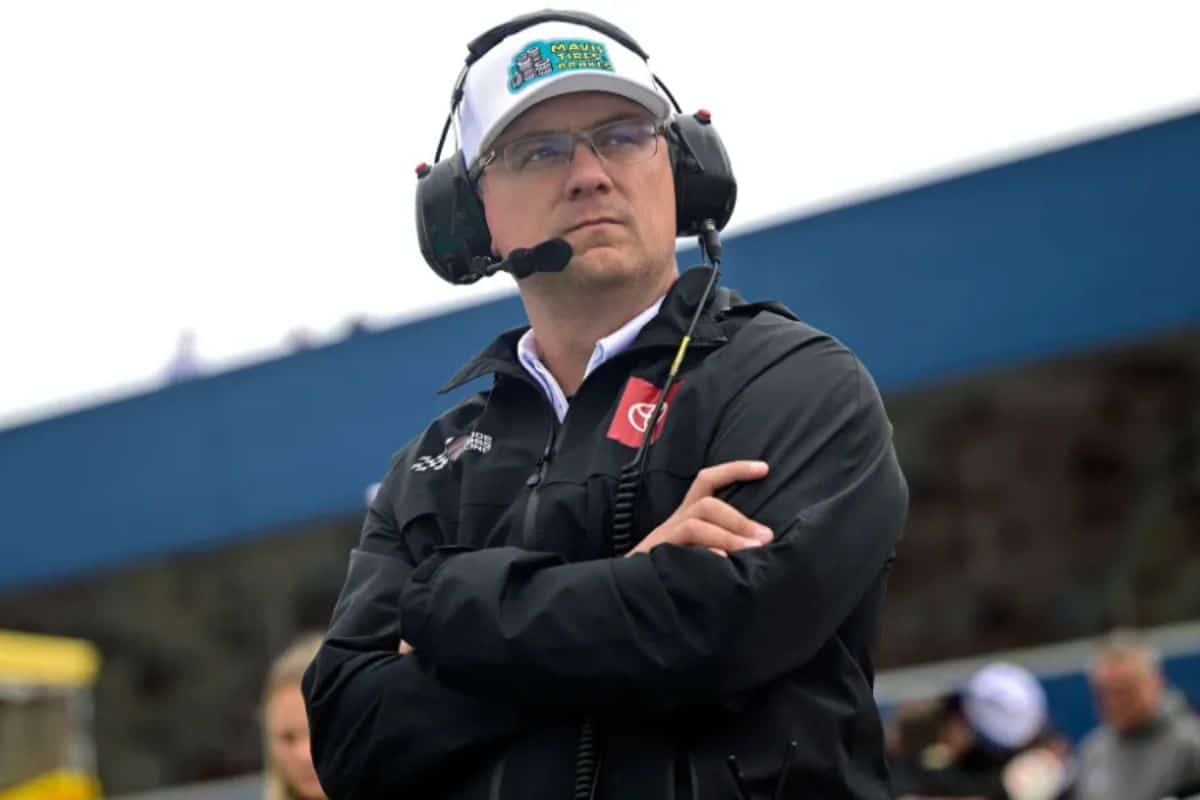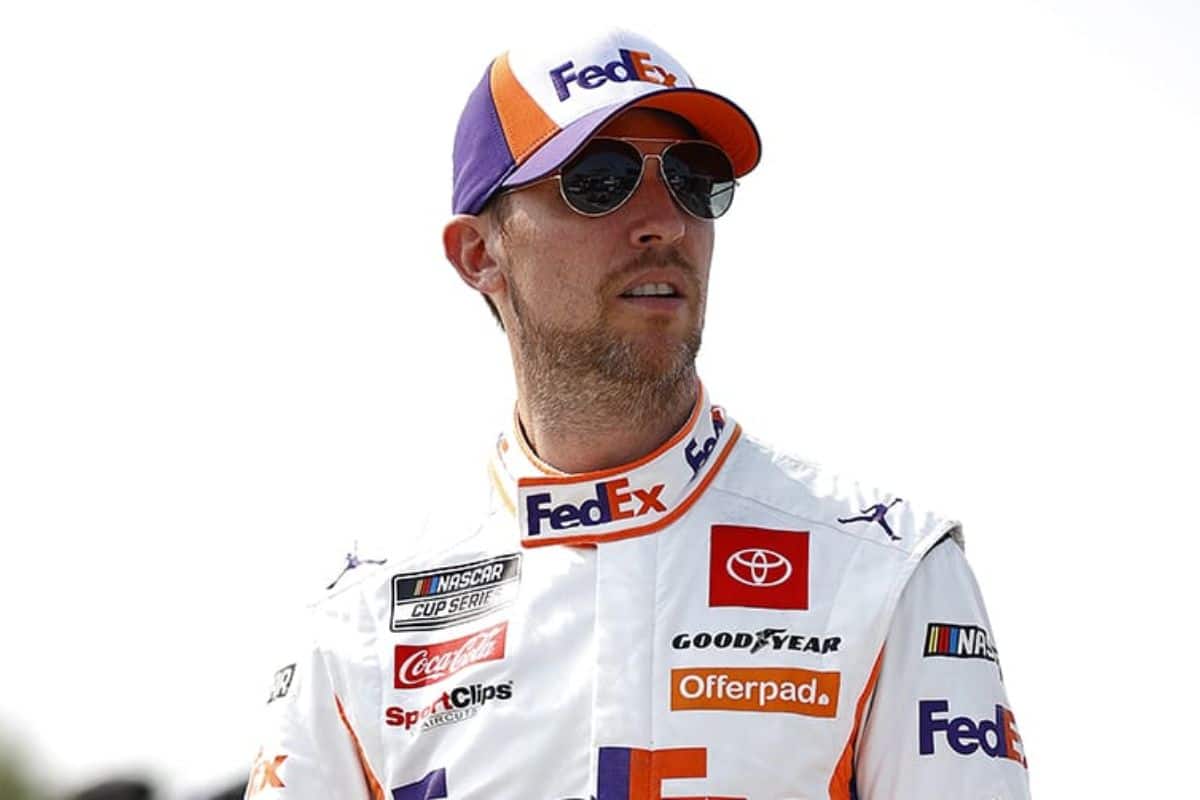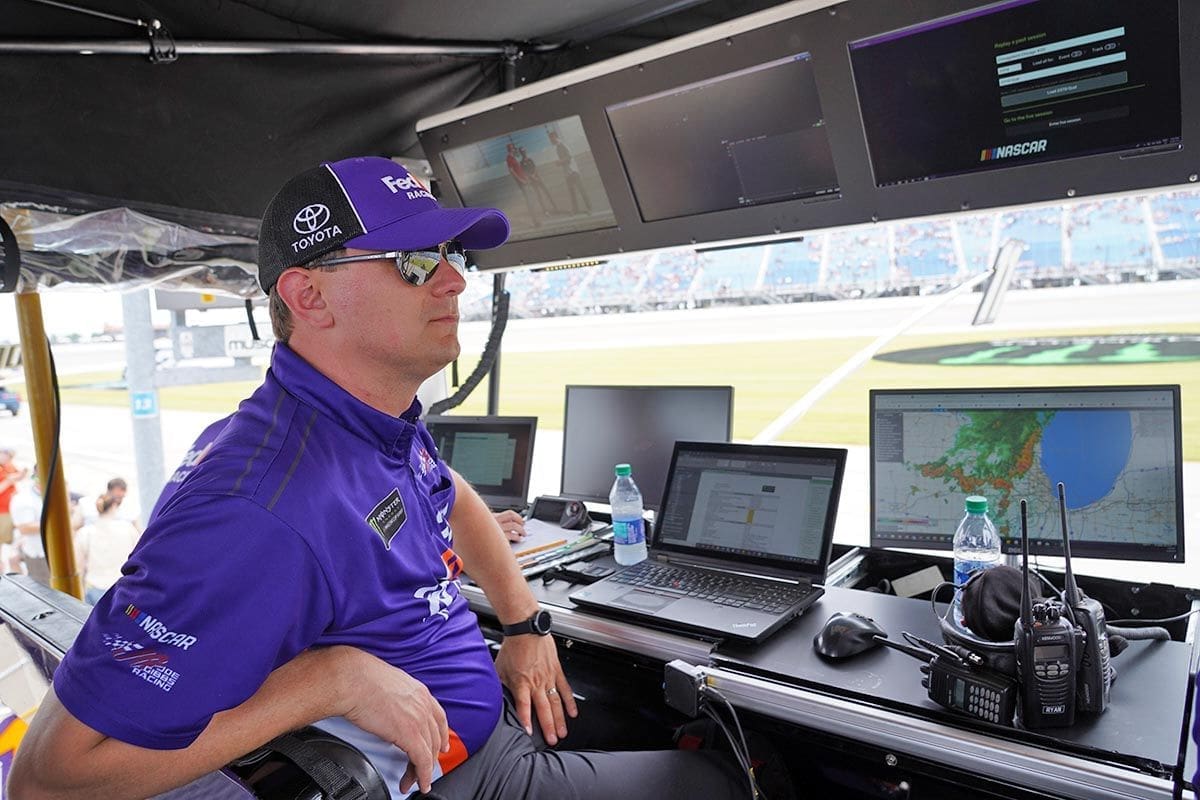Chris Gabehart Exposes NASCAR: Chris Gabehart‘s recent disclosures bring to the forefront the demanding reality of NASCAR’s condensed race weekend schedule, revealing the immense challenges placed on crew chiefs and teams. The rigorous process of fine-tuning cars through advanced simulations and exhaustive data analysis, often at the expense of personal time, highlights the relentless pursuit of competitive edge. Gabehart’s insights into the sleepless nights and unyielding workload paint a vivid picture of the sacrifices woven into the fabric of professional racing.
Key Highlights
- Chris Gabehart highlights the relentless demands and long hours endured by NASCAR crew chiefs and engineers.
- The two-day race weekend format compresses the workload, intensifying stress on support crews.
- The drastic reduction in practice sessions necessitates meticulous car preparation and problem-solving.
- Post-qualifying rounds involve late-night shifts focused on simulation analysis, component inspections, and strategy meetings.
- Gabehart’s transparent admissions shows the constant demands and sacrifices faced by NASCAR teams.
Changes in NASCAR Race Weekend Schedule
In recent years, particularly following the disruptions caused by the COVID-19 pandemic, NASCAR has greatly altered its race weekend schedule, significantly changing its race weekend schedule, with a particular focus on reducing practice sessions and compressing events into a more intense two-day format. This shift represents a significant departure from the traditional three-day race weekends, which allowed teams ample time for setup and adjustment.
Previously, the three-day format provided a structured environment where drivers and crews could carefully fine-tune their vehicles. This included multiple practice sessions, qualifying rounds, and the main event spread out over three days. However, the pandemic necessitated a reevaluation of these norms, leading to a condensed schedule designed to minimize time at the track and reduce potential virus exposure.
The most noticeable change is the drastic reduction in practice sessions. What was once a thorough preparatory phase has been shortened to a mere 20-minute window. This limited practice time places immense demands on teams to optimize their vehicles swiftly, often relying heavily on simulations and pre-race data analysis. The condensed format forces teams to be more strategic and efficient, yet it also raises significant challenges in terms of car performance and reliability.
While the two-day race weekend brings an intensified focus on the main events, it also compresses the workload, creating a more demanding environment for all involved. For fans, the action-packed format may heighten excitement, but for teams, the condensed schedule necessitates a rapid adaptation to new constraints.

Impact on Teams and Crew Chiefs
Chris Gabehart’s transparent admissions highlight the constant demands faced by NASCAR teams and crew chiefs. They often endure long hours and heightened stress to guarantee race-day success. While the short-race weekend schedule appears advantageous for drivers, who simply need to perform during qualifying rounds and the main event, it imposes significant strain on the support crew.
Crew chiefs and engineers, such as Gabehart himself, frequently sacrifice sleep and personal time to make sure the car’s best performance. Their week-long preparation culminates in an intense, high-pressure environment, requiring meticulous attention to detail and quick problem-solving. Although a seamless race can offer a reprieve, the unpredictability often necessitates additional labor, highlighting the relentless nature of their roles within NASCAR.
“You’re at work; from the time you leave until the time you come back, you’re at work. When you’re doing the job of engineer or crew chief.” – Gabehart
Best For: NASCAR drivers who benefit from a streamlined race weekend schedule, allowing them to focus on performance during qualifying rounds and the main event.
Pros:
- Allows drivers to concentrate on peak performance during critical race moments.
- Offers potential breaks for the entire race team if everything goes smoothly.
- Streamlined schedule can reduce overall fatigue for drivers.
Cons:
- Puts significant strain on crew chiefs and engineers with extended hours and increased stress.
- Requires meticulous preparation and quick problem-solving, leading to potential burnout.
- Unpredictable race conditions often necessitate additional labor, disrupting personal time and sleep.
Workload After Qualifying Rounds
Despite the brief respite following qualifying rounds, the workload for NASCAR teams intensifies as engineers and crew chiefs often find themselves working late into the night to make sure the car is race-ready. These late-night shifts are not uncommon, with team members sometimes toiling until 2 or 3 a.m. to finalize plans and adjustments. The complexity of the task at hand necessitates detailed attention to different aspects of the race car and strategy.
“There are some (schedules) where you don’t get out until 6 or 7 at night, and you’ve got to be back at 7 a.m. Those are brutal; it’s very common in those schedules for us to be up until 2 or 3 a.m. working on finalizing the plan. Whether it be simulation or what are we going to do to the car? Or because of where we’re starting, how does that change our philosophy? There’s a lot of details that go into it.” – Gabehart
The work is far from done for a NASCAR Cup Series team when you see them leave the garage on a Saturday afternoon or Saturday night.
"It's very common … for us to be up until 2 (or) 3 a.m. working on finalizing the plan." pic.twitter.com/Vc9PP93yrW
— Kelly Crandall (@KellyCrandall) June 1, 2024
- Simulation Analysis: Engineers spend countless hours running simulations to predict how the car will perform under different race conditions. These simulations help in making data-driven decisions about aerodynamic adjustments, tire choices, and fuel strategies.
- Adjustments Based on Starting Position: Where the car qualifies can drastically change the team’s approach. If starting at the front, the focus might be on optimizing speed, whereas starting at the back might necessitate a strategy for overtaking and managing traffic.
- Component Inspections and Adjustments: Each component of the car, from the engine to the suspension, needs to be carefully inspected and adjusted. This process ensures that every part is performing at its peak and adheres to NASCAR’s strict regulations.
- Strategy Meetings: Crew chiefs and engineers hold extensive strategy meetings to discuss potential scenarios and how to respond to them. These meetings are critical for aligning the entire team’s efforts toward a unified race plan.

Strategies and Success of Hamlin and Gabehart
With the grueling workload after qualifying rounds setting the stage, the strategic skill of Hamlin and Gabehart has emerged as a defining element of their success in the 2024 season. Their synergy, forged through a meticulous blend of data-driven decisions and instinctive calls, has propelled them to the forefront of NASCAR competition.
Gabehart, renowned for his analytical expertise, has made data the cornerstone of their race strategy. By leveraging advanced telemetry and real-time analytics, he guarantees that every decision—from tire management to pit stop timing—is backed by quantifiable insights. This approach has not only optimized their performance but also minimized the margin for error. Gabehart’s emphasis on data has transformed the #11 team into a model of precision and efficiency.
“It was so unexpected, and the tires and track behaved so differently that all of that prep work you spend Monday through let’s say, Sunday morning was all kind of garbage. You had to literally start to work off of instincts, of what you needed to do with the car, how the driver had to behave, and how race strategy needed to be called.” – Gabehart
However, NASCAR’s unpredictable nature often demands a more instinctive approach. Gabehart’s ability to pivot from data reliance to gut-driven decisions has been equally important. During unexpected race developments, such as sudden weather changes or on-track incidents, Gabehart’s instincts have proven invaluable.
This dynamic strategy, balancing empirical data with seasoned intuition, has given Hamlin the adaptability needed to navigate the complex race environment.
Looking Ahead and Rivalry with Hendrick Motorsports
As the 2024 NASCAR season progresses, the #11 team’s biggest challenge will be contending with the formidable roster of Hendrick Motorsports. Chris Gabehart and Denny Hamlin have demonstrated a keen ability to craft winning strategies, but the rivalry with Hendrick Motorsports is poised to test their mettle. Hendrick, with its legacy of excellence and a star-studded lineup, presents a significant hurdle in Hamlin’s quest for the championship.
- Talent Depth: Hendrick Motorsports boasts drivers like Kyle Larson, Chase Elliott, William Byron, and Alex Bowman. Each of these drivers has proven their ability to win races and compete at the highest level.
- Technical Expertise: Hendrick Motorsports is renowned for its cutting-edge technology and engineering capabilities. Their cars consistently display superior performance, making them formidable opponents on the track.
- Team Dynamics: The internal cohesion and teamwork within Hendrick Motorsports are exemplary. Gabehart and Hamlin will need to make sure that their own team’s dynamics are equally strong to avoid any internal friction that could derail their championship aspirations.
- Strategic Innovation: Both teams are known for their strategic insight. Gabehart’s strategies have been crucial to the #11 team’s success, but they will need continuous innovation to outmaneuver Hendrick’s tactical approaches.
While the rivalry is intense, it also propels both teams to new heights. The challenge for Gabehart and Hamlin is to utilize their strengths while continuously adapting to the evolving competitive landscape.

News in Brief: Chris Gabehart Exposes NASCAR
The honest insights provided by Chris Gabehart shed light on the intense demands of NASCAR’s compressed race weekend schedule on teams and crew chiefs. These disclosures emphasize the significant workload involved in optimizing vehicle performance through simulations and data analysis, as well as the personal sacrifices made for thorough preparation.
Gabehart’s openness shows the dedication required for competitive success and encourages a balanced reflection on future strategies and the ongoing rivalry with Hendrick Motorsports.
Also Read: Chris Gabehart and Denny Hamlin: Masterminds Behind Bristol’s Victory
